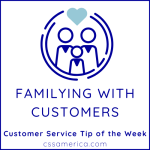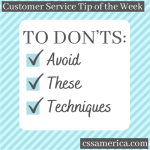
Jamey is young, but he’s pretty good at sales – his new sales numbers generally prove the point. He seems to care about fixing issues, speaks articulately, and responds quickly and specifically “on his feet” when asked the tough questions or challenged. He’s confident, so Jamey was shocked when one of his accounts told him “That’s not how things are done in the South; you’ve got to develop a relationship first.”
Jamey had responded to every request or question, quickly. He was speedy in resolution to issues. He didn’t take up too much of the customer’s time on the phone – the conversations were short and quick.
The problem was that Jamey’s quick responses, fast talking, and general speed (in everything he did) didn’t appeal to this client. The quick responses were good, but they were often a few words in an e-mail with no greeting such as “Nope. Can’t work that out this time.”
Jamey thought he was being considerate of the client’s time with his quick calls, but they were quick because Jamey was peppering his customer with questions instead of creating a more two-way conversational tone. When Jamey received a call from the account, he typically talked fast and hung up quickly. When Jamey fixed a problem quickly, he often didn’t call the client to ensure that the fix worked.
Even though Jamey did so many things technically correct, he didn’t have a good enough read on this account to tailor how he communicated about those “things” to the preference of his client. So the client interpreted that Jamey was impatient, rushed, or just didn’t care about the client.
In customer service, sometimes it’s not just about what you do or how quickly you do it; rather, to many customers, it’s how you communicate with them during the process.
Don’t rush through conversations like they’re just another box on the “To Do” list. Be patient. View relationship-building as a process.











